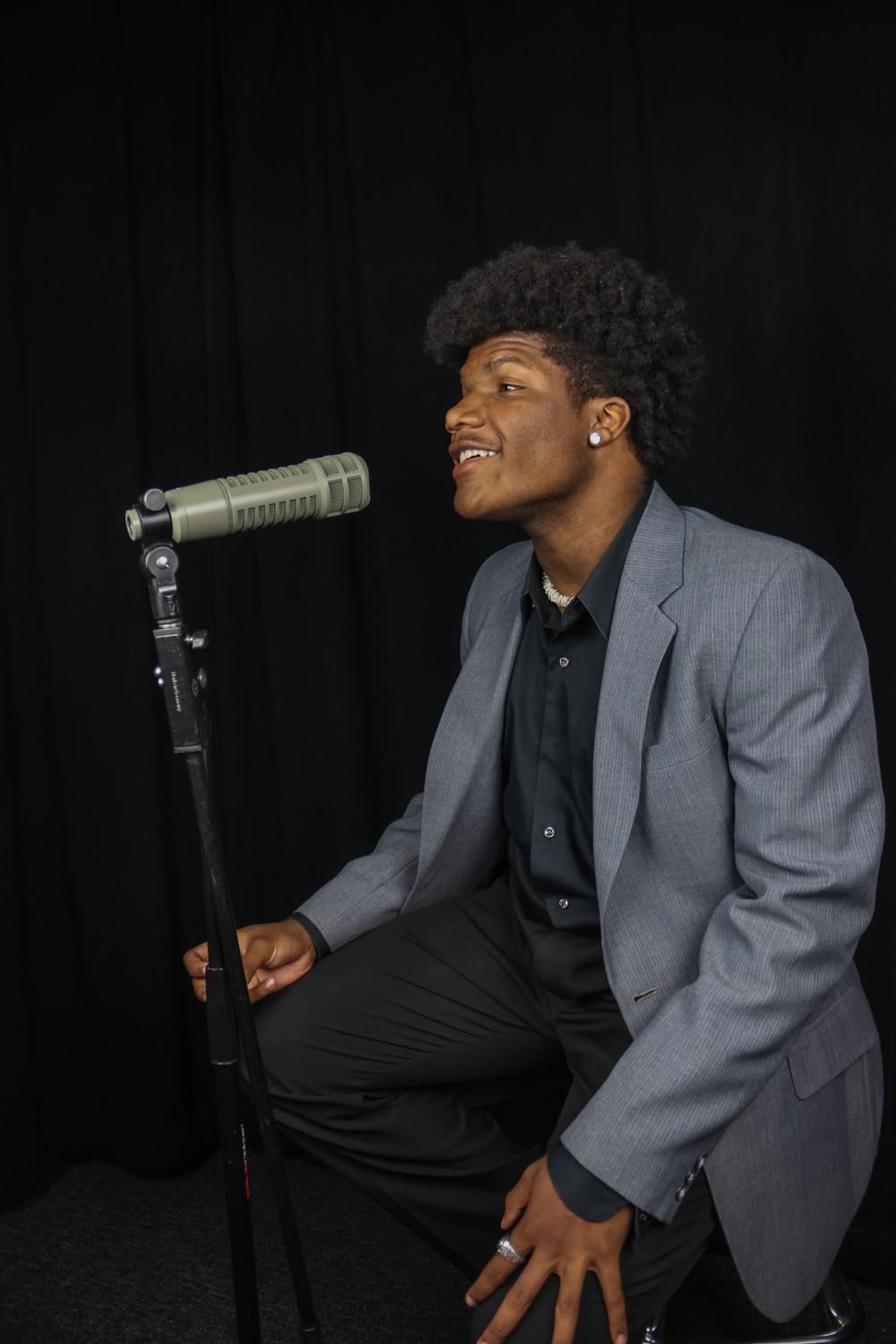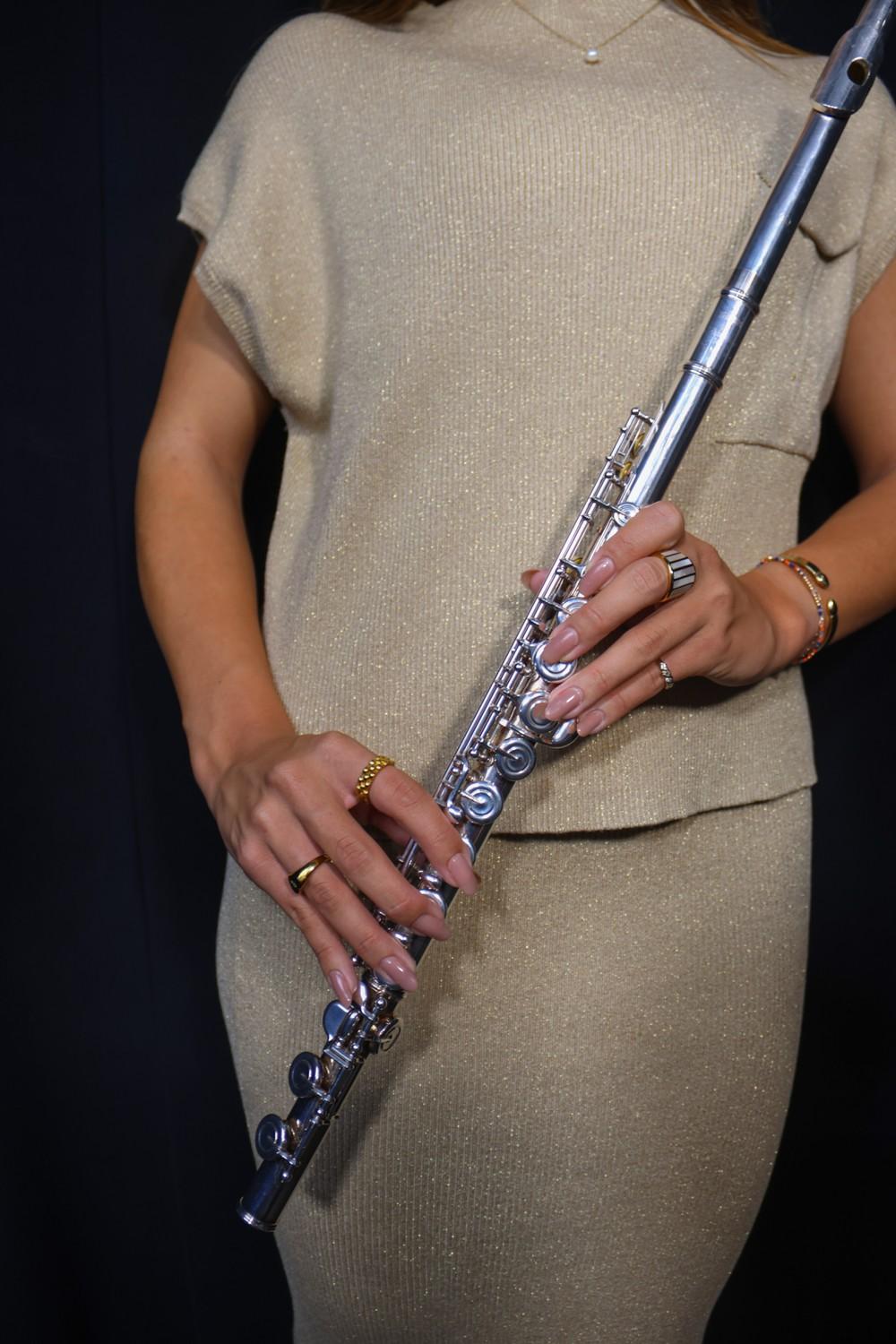
Sophomore James Davis sings at Pepperdine University on Oct. 22. Jazz has influenced many different genres. Photos by Melissa Houston
With the strum of a guitar, the keys of a piano and the smoothness of vocals, jazz has entered the room.
She walks in with grace and a little kick, setting her apart from her peers in funk and soul.
Jazz began through a spirit of spontaneity. Groups of Black slaves would gather between work and sing and dance straight from the heart, according to the BBC.
The syncopation of these sounds brought about jazz. This syncopation, versus the simpler synchronization, is Religion Prof. Raymond Carr’s approach to life and how he views theology, he said.
“It allows me to have an appreciation for the beauty of difference because when I look at a book like Genesis, even in the beginning, is that the world is teeming, it’s flourishing, it’s all these different things,” Carr said. “The beauty of difference that is a part of this wonderful panoply.”
From there, jazz grew into a genre that is the parent of so many others, such as R&B, early hip-hop and even the new era of pop we are entering. Jazz is not simply a “genre of music,” but a root system from which all others stem. It’s a way of navigating life.
“Jazz is what you want it to be,” senior Amelia Mordan said. “And it’s always different and ever-changing in the way that the world is as well. And I think that’s probably the most special part about it.”
Jazz was created during a period in American history marked by significant stress and many trials; however, through it all, jazz emerged.
Absence of Words, Presence of Conversation
The beauty of human connection lies in the ability to communicate without words. Jazz is known for its absence of lyrics and an emphasis on the instrumental, according to The Guardian.
Mordan said she was drawn to the beauty of jazz, where little is said but much is understood. Jazz musicians often lean on their instruments as their voice instead of relying on words. It fills the space with an experience for listeners to create their own music within the music.
The “La La Land“ soundtrack is a contemporary approach to telling a story through music. The score for the film, coupled with the dramatic storyline, made fans like Mordan view jazz in a new light, she said.
“The jazz in that album — specifically without lyrics — is what makes it super special because it tells a story through each press of an instrument,” Mordan said. “You don’t need words to tell a story, and it goes along so well with the storyline, and it’s so emotional, even with no words.”

Nonverbal communication often allows us to say the words we can’t precisely articulate. We can use our body language, our emotions and our gestures.
Carr said he deeply appreciates the silence and absence of lyrics jazz creates, acknowledging that it makes “silence visible.”
“Jazz allows me the freedom to hear the sound and move to it,” Carr said.
Jazz musicians use the speed at which they play, the inclinations and even the pauses and silences to bring listeners into a conversation with them, according to AllAboutJazz.
Junior Henry Hicks said he loves Cuban jazz and jazz trumpeter Miles Davis, and appreciates the instrumental vibe that jazz sometimes falls into. He can easily associate it with his own life.
“How fast the song is going, and it can kind of be like the way our daily lives are super fast,” Hicks said. “And then how in other parts of the song, it would slow down. So just reminding ourselves, so we need to slow down.”
There is an art to “listening” to nonverbal communication, which is a vital part of building relationships with others, Hicks said.

“You have to listen to what people are saying, and what it means to listen, to me, is really being intentional and thoughtful,” Hicks said. “And hearing what people are saying and then responding to it.”
Drawing from its African American roots with the call-and-response style, jazz artists can “call” to the listener without using actual words. With their body language and pitch of the instrument, jazz creates the unique ability to speak without words, Carr said.
“When you say something, you’re not just saying it, you’re saying it with your body, your style,” Carr said.
Spontaneity of Jazz
Jazz listeners often adore its spontaneous nature, according to Jazz Aspen Snowmass. However, the spontaneous nature of jazz is, in fact, very structural.
Thelonious Monk was a popular mid-20th-century Black American jazz pianist. His approach to jazz was to start with a melody and improvise from there.
“The spontaneity may happen in the moment, but it’s already bringing a certain framework to that,” Carr said.
Hicks said he admires the flow of jazz and has slowly begun to embrace a more spontaneous lifestyle that is still rooted in the “melody” of life.
“I’m not not worrying about school, but enjoying life and being okay with a little bit of the unknown, because I’ve been trying to plan everything,” Hicks said. “You can’t always plan life.”
Mordan said she has a similar approach, leaning into the flow and spontaneity of life, regardless of where it takes her. She experienced an unexpected professional shift in music. Constantly growing up around music, Mordan was expecting to explore a musical career in more secular music. But life, like jazz, went in a different direction; she began singing with Pepperdine’s WAVES WORSHIP.
Through her experience with WAVES WORSHIP, she’s gained a different perspective on what music truly is, Mordan said.
Freedom in Jazz
“The thing that defines jazz the most for me is freedom,” Carr said.
The freedom to remain in a melody, the freedom to not. The freedom to be instrumental, the freedom to not.
Jazz stands alone. She often isn’t put in a box, Carr said. There’s acid jazz, bebop, free jazz, swing and the list goes on. Each has different characteristics that set them apart, but they all come from the grand tree of jazz. As humans, we each can resonate with a particular attribute, whether it’s the eclecticism of acid jazz, the spontaneity of free jazz or the grooviness of swing.
“That’s the cool part about jazz, it’s never done the same when it’s performed,” Mordan said. “I feel like more things should be like that. It just makes it more human, you know? It doesn’t have to be this perfect scenario. It can kind of be a little unique every time it’s done.”
__________________
Follow the Graphic on X: @PeppGraphic
Contact Shalom Montgomery via email: shalom.montgomery@pepperdine.edu

